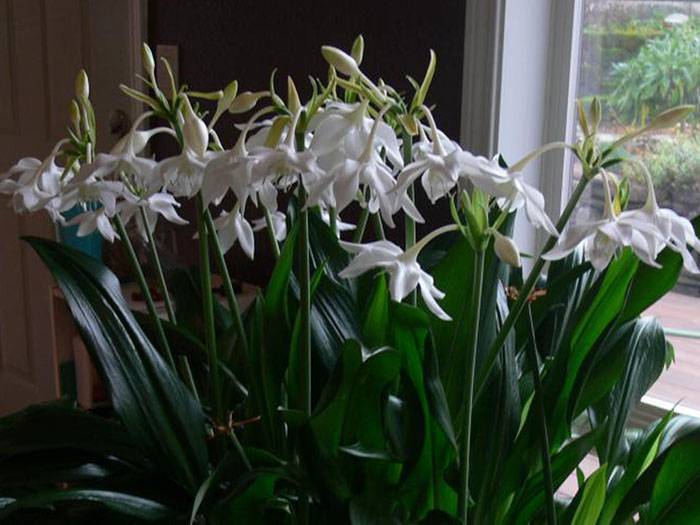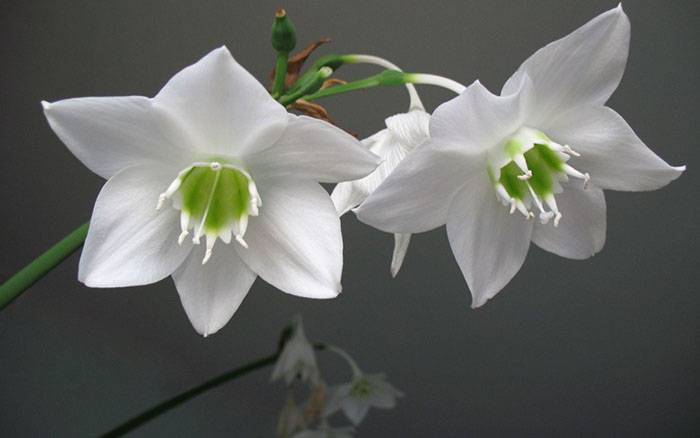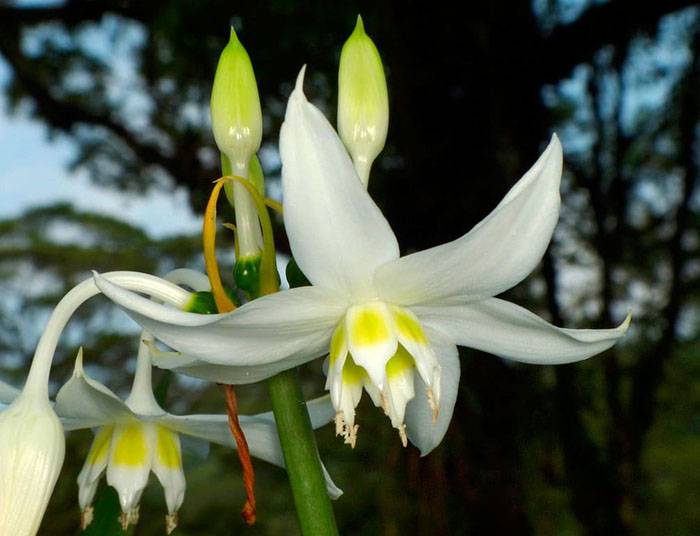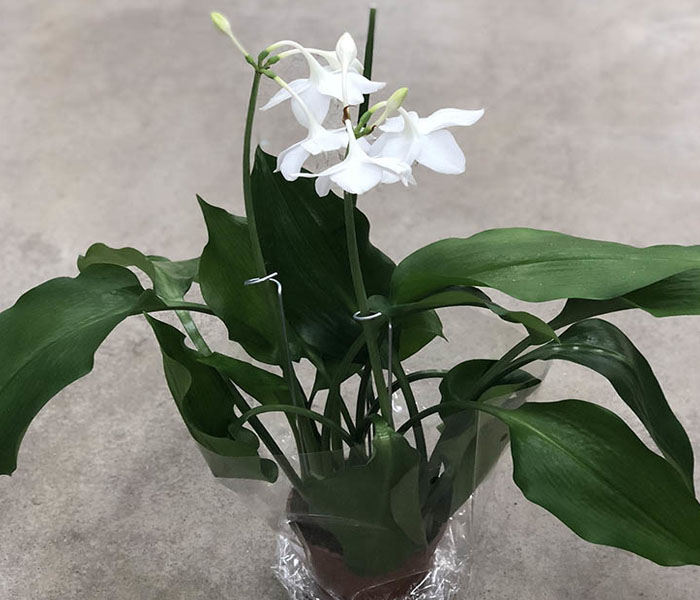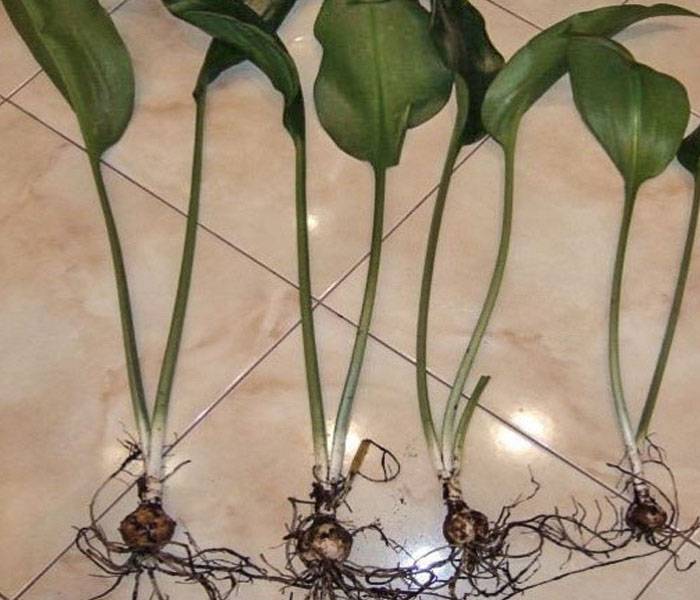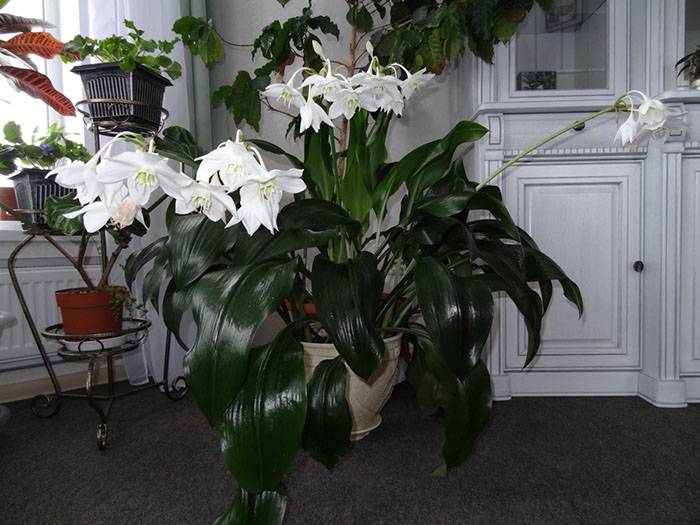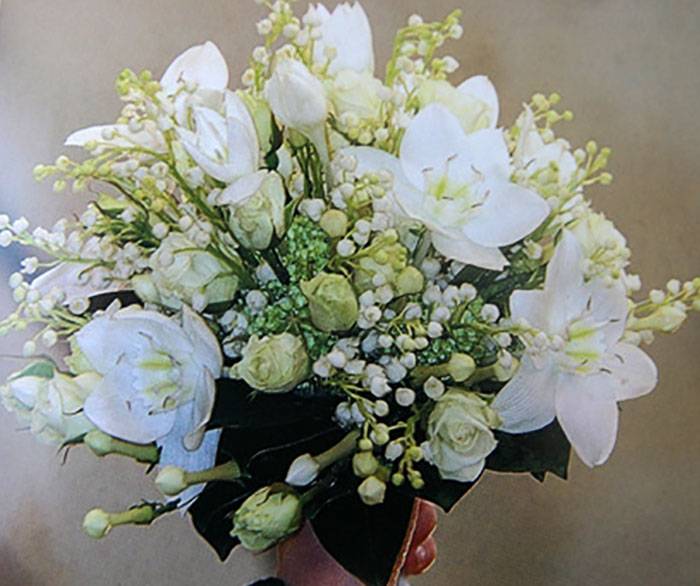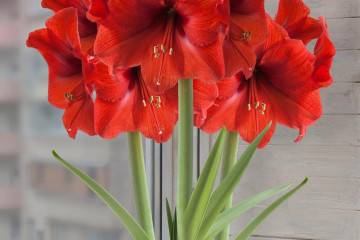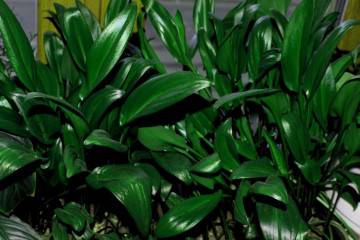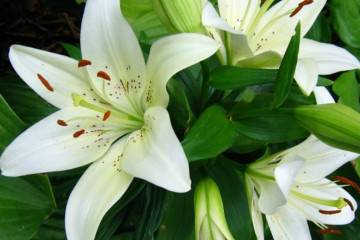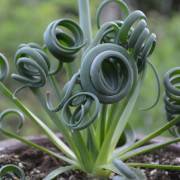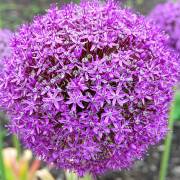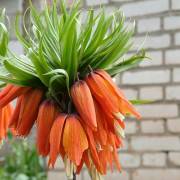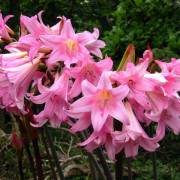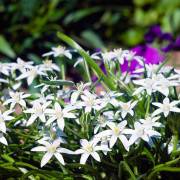Amazonian lily eucharis - home care
Content:
Eucharis is a native of the Colombian Andes. Having arrived in Europe in the 19th century, it rapidly gained popularity. This gentle, beautifully flowering bulbous plant is also called the Amazonian lily, although, perhaps, it would be more accurate to call it the Amazonian daffodil, their flowers are very similar. Graceful snow-white petals surround a crown formed by overgrown bases of filaments.
Appearance
Eucharis belongs to the Amaryllis family. It is a bulbous plant with large, long-stemmed shiny leaves. In young leaves, the edges curl into tubes along the midrib.
It usually blooms twice a year - in spring and from October until deep winter. On the powerful flower arrow, large white flowers with a pleasant aroma are formed. If the eucharis is well cared for, the plant can form several peduncles from one bulb.
Types and varieties of indoor eucharises
The genus Eucharis includes more than ten species. These representatives of the tropical flora have minor differences. A beautifully flowering plant with wide leaves is also called a room lily.
Most common in indoor floriculture:
- large-flowered eucharis (E. grandiflora, or amazonica) with flowers 12 cm in diameter. The central crown is slightly greenish. Flowers are collected in 4-6 pcs. on a powerful peduncle. The smell is strong, pleasant. Leaves are dark green, wide, elliptical;
- snow-white (E. candida), a feature of which is a lot of flowers (up to 10 pcs.) on one peduncle. The flowers are white with petals bent outward. There are yellow blotches in the apex of the crown. Peduncle length 30-60 cm;
- eucharis Sandera (E. Sanderi) - a kind of 40 cm tall. Dissolves white flowers with a yellow throat.
Boarding and transferring after purchase
Eucharis bulbs are not often found in a flower shop, except in centers specializing in the sale of bulbous plants. Usually in stores they offer plants in pots, often already with peduncles.
Planting an Amazonian lily without leaves
If a eucharis bulb without leaves is purchased, it is urgent to remove it from a state of deep dormancy, stimulating the germination of leaf plates. The bulb must be planted so that the tip is above the surface of the soil, which allows you to monitor the condition of the plant. Watered carefully, excess moisture can cause decay.
Within a month, young leaves appear from the top. After that, the plant can be fed every two weeks.After making sure that the flower develops normally, add earth to the pot to cover the bulb.
Planting eucharis with leaves
The Amazon lily is transplanted during the dormant period. It is determined by the lack of growth of young leaves.
Bulbs with leaves can be buried 5-10 cm in the ground. The soil substrate must be nutritious with high moisture capacity. In nature, the Amazonian lily grows on humus-rich, loose soils.
Step-by-step instructions for preparing a land mixture include the following points:
- The choice of the main component for the soil. It can be sod or leafy land.
- A baking powder - perlite or sand - must be added to the soil mixture.
- Enrichment of the soil with compost.
- Adding charcoal to decontaminate the soil will help prevent the bulb from rotting.
Adult large plants are transplanted every three years into a large container. Eucharis blooms well only if there are babies near the main bulb. Therefore, children are not separated during transplantation. "In cramped quarters, but not offended" - this is just about the indoor flower eucharis.
Home care
For such an unpretentious flower as eucharis, home care is easy to organize. It is advisable to provide the Amazonian lily with conditions close to its natural growing environment - warm and high humidity.
Like other potted crops with a limited amount of soil, the Amazonian lily needs additional feeding. To maintain the appearance, remove dry leaf plates and wilted flower stalks, and also regularly wipe the dust settling on wide leaves.
Lighting and temperature control
The plant will be comfortable on eastern windows, as eucharis prefers diffused light without direct sunlight. The adult Amazonian lily grows to a large size, and the plant may not fit on a windowsill. In this case, eucharis can be comfortably placed on a stand near the window.
Drafts and significant temperature fluctuations should be avoided. They negatively affect the development of the plant and cause the flowers to shrink.
Eucharis is a thermophilic plant, therefore 7 ° C is a critical temperature, with this mode hypothermia and decay of the bulbs are possible. The decay process begins from the bottom, so it is unlikely that it will be possible to notice the problem at an early stage. It is worth taking precautions in advance - in cool conditions, reduce watering as much as possible.
Optimum temperature during growth is 23-25 ° C. In summer, the flower can be taken out to the balcony, shading from the direct sun.
In winter, eucharis is kept at a temperature of 16-20 ° C. In this case, it is important to provide him with good lighting.
How to water eucharis
During growth, the Amazonian lily requires abundant but infrequent watering and spraying. It is necessary to ensure that when spraying, water does not fall on the inflorescences and does not accumulate at the base of the leaves. It is important to avoid stagnant water in order to avoid rotting of the bulbs.
Top dressing and fertilizer composition
When the plant begins to release new leaves, it needs to be fed. This is done at intervals of twice a week. You don't need to choose a fertilizer with a high nitrogen content so that the Amazonian lily does not increase its green mass to the detriment of flowering.Of course, shiny leaves of a peculiar shape are not devoid of attractiveness and are suitable for the formation of tropical thickets, against which other flowers will look spectacular. However, the zest of eucharis is in its delightful flowering, therefore, the formation of peduncles is stimulated using special fertilizers for flowering plants with a sufficient phosphorus content.
Pests and diseases of eucharis
Plants with weakened immunity or in unfavorable growing conditions are more susceptible to diseases and pest attacks than others. Therefore, the main preventive measure is to ensure an optimal microclimate.
Problems in plant development can be caused by the following insects:
- scale insect is a small parasite that sucks the sap of a plant. Where the scale insect feeds, yellow spots appear on the leaves. A distinctive feature of these insects are waxy shields, visible to the naked eye. If pests are found, the plant is wiped with a cotton pad dipped in soapy water, and this procedure is repeated after a week;
- a spider mite is a tiny insect that can be seen with a magnifying glass. His presence is recognized by the cobweb on the lower part of the leaves. Damaged leaves turn yellow and wither. Mites don't like moisture. Therefore, preventive measures are regular spraying of the plant and high air humidity;
- thrips is a small winged insect that quickly spreads to neighboring plants. The leaves damaged by thrips turn brown and die off.
Diseases threatening the Amazonian lily:
- a red burn progresses against the background of temperature changes. Bulbs, peduncles and leaves are covered with bright red spots. The damaged areas are cut out and the plant is treated with maxim. Then the plant must be transplanted into new soil;
- gray rot appears on leaves at low temperatures and high humidity. The damaged parts of the plant are removed, watering and temperature conditions are corrected, and eucharis is treated with foundationazol.
Frequent mistakes in the care of eucharis
A normally developing Amazonian lily regularly releases young leaves, while the old leaf plates dry out. This is a natural process if a sufficient number of young shoots replace dead leaves.
However, if the plant is rapidly losing leaves without growing new ones, this is cause for concern. The reason for this condition may be excessive moisture or, conversely, insufficient watering.
Discolored areas on the sheet plate are traces of sunburn. The plant should be rearranged or shaded.
A young bulb may not bloom in the first year, it needs to gain strength, grow leaves and lay a flower arrow. But why does not an adult eucharis bloom? The absence of flowering in a large specimen indicates deviations in care. This can be due to a low room temperature or a lack of a rest period. By adjusting the care and correctly alternating periods of activity and rest, you can make the plant bloom up to three times a year.
The pledge of lush bloom is also the presence of children. When transplanting eucharis, children try not to separate it unnecessarily.
Features of the reproduction of eucharis
The easiest way to reproduce eucharis is with baby bulbs. They are separated from the mother plant and covered with charcoal. Young bulbs are planted in small flower pots filled with soil. The tops of the bulbs are left above the ground.
Eucharis cleans the air in the apartment from harmful substances and bacteria, thus being a living filter. In addition, the Amazonian lily is irreplaceable as an interior decoration - its leaves are very decorative, and flowering creates a festive atmosphere in the house.
Eucharises are also good in cut. Original flower arrangements with the Amazonian lily will decorate any celebration, but snow-white beautiful flowers in the bride's bouquet are especially appropriate.
Thus, it is a versatile flower that is not difficult to grow at all. The main thing is to clearly follow the instructions described above, and everything will work out.
